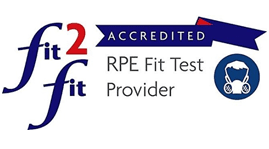Fit testing ensures RPE matches the size and shape of the wearer’s face.
If a tight-fitting RPE (Respiratory Protective Equipment) does not fit the wearers’ face, contaminated air will pass through the seal instead of the filter. Just a tiny gap, can result in a significant loss of protection.
Therefore, the job of fit testing is to identify the workers who are not being protected by their issued mask, due to it being the wrong shape or size. You only find who is not being protected by their RPE, by testing everyone.
That is the first step, the second and more important task is to identify an alternative mask which will fit these individuals, so they are provided with the same level of protection as everyone else.

Source: 3M

Source: Moldex
Only tight-fitting masks require fit testing. Tight-fitting RPE have a seal which is pressed on to the face by some kind of head harness or straps.
RPE fit testing is a legal requirement of the UK COSHH, CLAW, CS, COA and IR Regulations. It establishes that the mask is ‘suitable’ for the individual.
Dust2Noise only offer RPE fit testing by a Fit2fit Accredited fit test provider who has proven his competence in qualitative and quantitative fit testing during a theory and practical exam, undertaken every 3 years.
The video below indicates when RPE fit testing should be repeated in the UK.
Contact us below for a RPE fit testing quote
